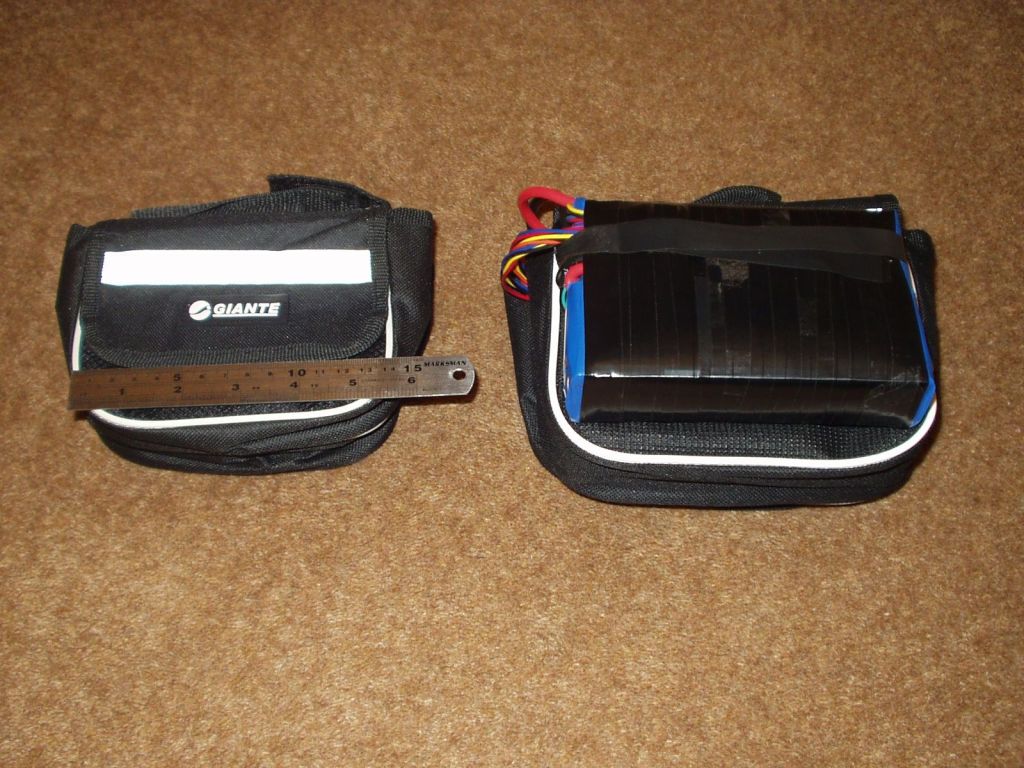Dmitryl, I also had a pair of
Turnigy watt meters connected to the battery during the test so that I could measure both the maximum current draw and the maximum regen current.
I can't say for sure which of the lows in the above graph relate to the 32.11 Amp load, but I know that the maximum load occurred within that particular time-scale of the testing, so it must have coincided with one of the low points shown.
For the calculation in my previous post I used the low point which had the largest overall voltage drop, assuming it would have resulted from the largest current draw.

I use LiPo because they are comparatively cheap, plus I'd already gained a fair bit of knowledge from R/C model use.
The pack used in the above test is made up of two of these 5000mAh Hard case LiPos connected in series:

The two batteries cost $42.76 plus delivery and the
tiny frame pannier that they snugly fit into was only $6.44 delivered.
Incidentally, the frame pannier was originally purchased so I could make up a second 14 cell pack, but when it arrived it was too small for the batteries to fit into, as it was considerably smaller than the first one I purchased from the same seller, even though the auction details were still identical.


Fortunately, the hard case LiPo packs are shorter than the standard soft pouch Lipos, so I was able to fit both batteries, an in-line 30 Amp fuse and a pair of watt meters into the bag for a neat and compact installation which only weighs 1.4 kg
(3.09 lbs) in total, which can easily be removed from the bike when necessary.
As far as being dangerous is concerned, apart from physical damage, the two main causes of explosions tend to be excessive discharge current and excessive charging current/voltage. The packs are rated for 20C continuous discharge and 30C peak
(100-150 Amps) so the 30 Amp fuse should prevent this from being exceeded as the result of a shorted cable etc.
The 5C charge rate
(25 Amps) is much greater than either the regen or my 7 Amp charger can supply, and I always monitor the packs carefully during the charging process, so I have tried to cover the most dangerous aspects of using these particular cells.
This 5Ah pack is used mainly for shorter runs, so I'm unlikely to use much more than around half of it's capacity, but the audible alarm function on the battery monitor would alert me if I start to drain it too much anyway.
Alan